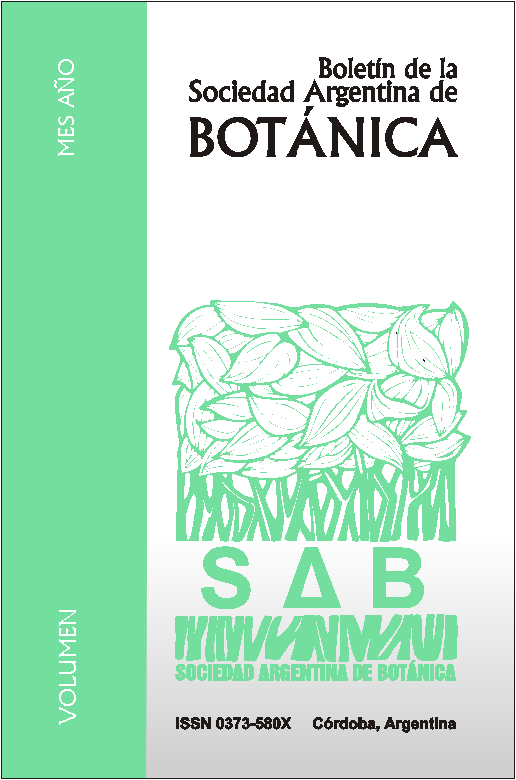An improved staining protocol for the assessment of arbuscular mycorrhizal in bryophytes
DOI:
https://doi.org/10.31055/1851.2372.v53.n2.20577Keywords:
, Anthocerotophyta, Bryophyta, Marchantiophyta, staining protocol.Abstract
The most accepted method for staining arbuscular mycorrhiza (AM) in vascular plants has been one proposed by Phillips & Hayman in 1970. In particular, for the study of AM in bryophytes (s.l.) [Anthocerotophyta, Bryophyta (s.s.), Marchantiophyta] some authors have introduced modifications to this technique. Even though all these protocols stain AM, their main disadvantage is related to the result of material maceration (e.g. over-softening or completely destroying plant cells due to the high temperatures used, the high concentrations of reagents or the long-term exposure to aggressive chemicals). In order to optimise the results for the observation of AM in this group of plants, a modification is presented to the traditional staining technique. In the protocol here proposed, 70% ethanol is used as fixative and first clarifier, 1% potassium hydroxide (KOH) (80 °C, 20 min) as a second clarifier; 1% hydrochloric acid (HCl) (50 °C, 10 min) as an acidifier and 0.05% trypan blue (60 °C, 20 min) for dyeing. This improved protocol is not destructive, it is fast to perform and it is of wide application since it allows staining the AM in bryophytes.
Downloads
Published
Issue
Section
License
Provides immediate and free OPEN ACCESS to its content under the principle of making research freely available to the public, which fosters a greater exchange of global knowledge, allowing authors to maintain their copyright without restrictions.
Material published in Bol. Soc. Argent. Bot. is distributed under a Creative Commons Attribution-NonCommercial-ShareAlike 4.0 International license.





